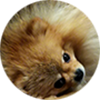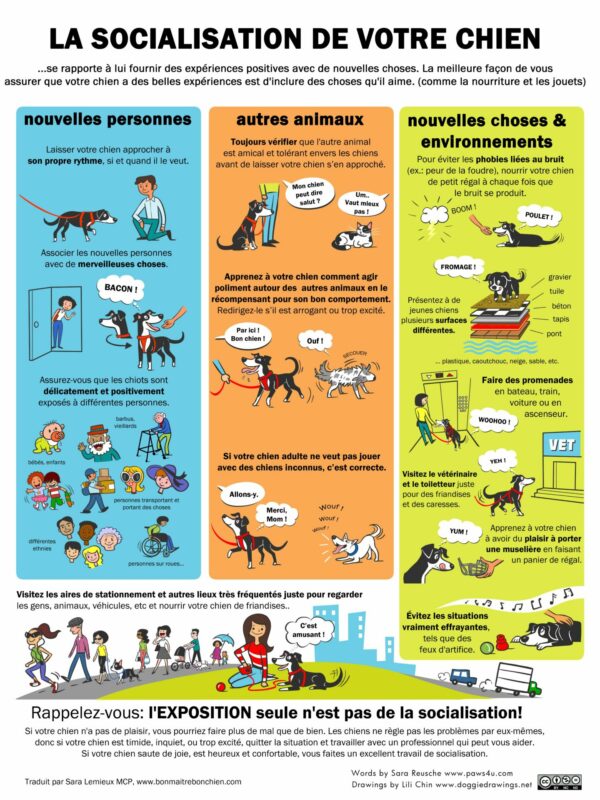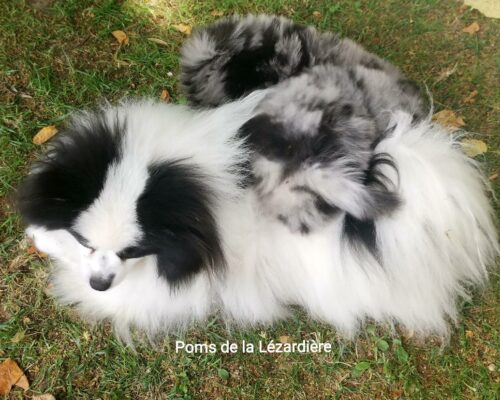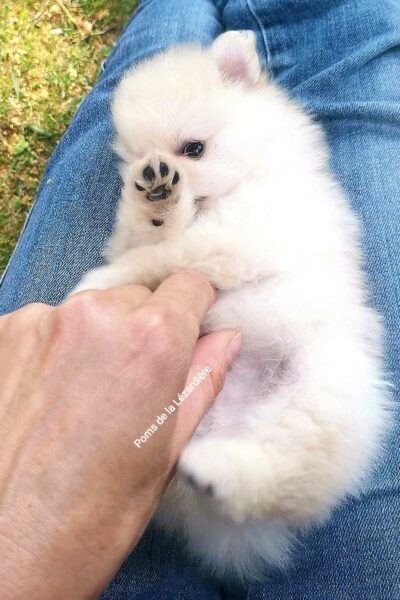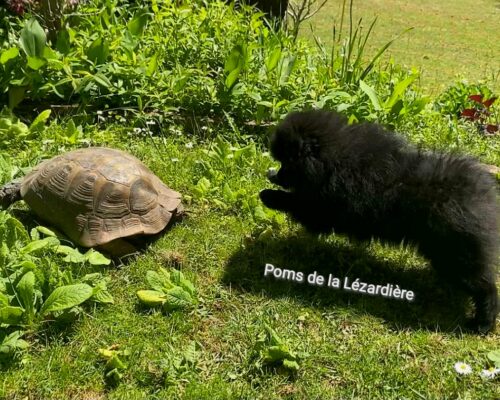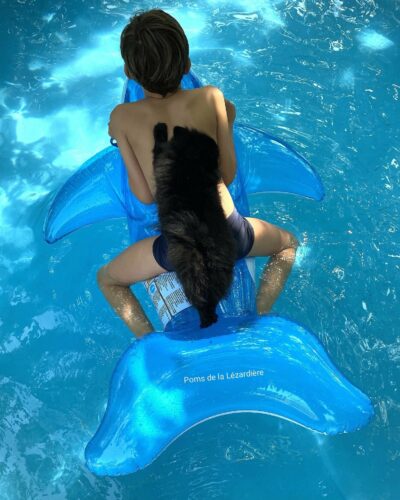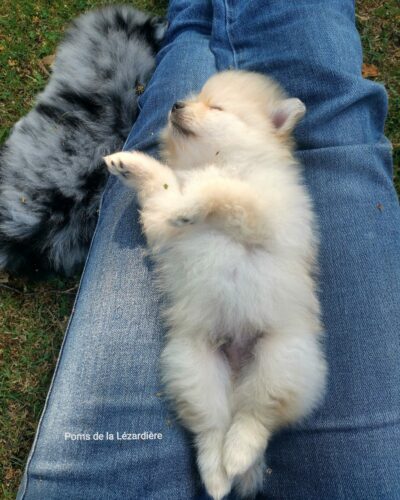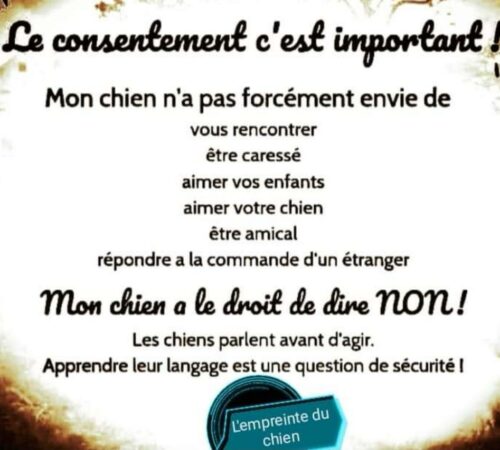The essential thing in education is not the doctrine taught, it is the awakening.
Quote from Ernest Renan; Memories of childhood and youth (1883)
Discover in videos
Puppies and cardboard video
Puppy massage video
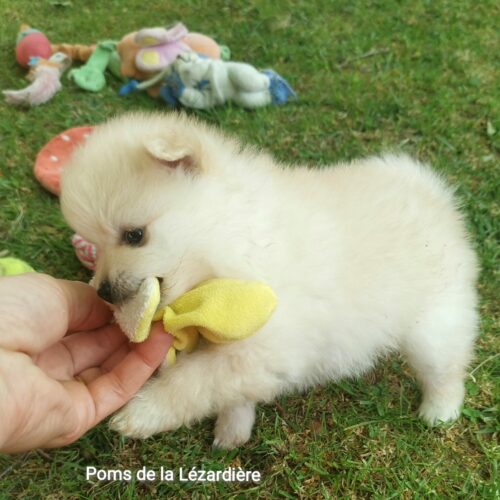
1 – Stimulate the puppy to be more confident and self-assured.
Making noise with your hands and feet, playing music, vacuuming…
Petting him, playing with him, brushing him, running with him…
Take him out, have him meet people…
The puppy continues to explore and learn throughout its life.
With all this stimulation, the puppy learns more about his environment. He gains confidence. It will be much less stressful for them to deal with new situations.
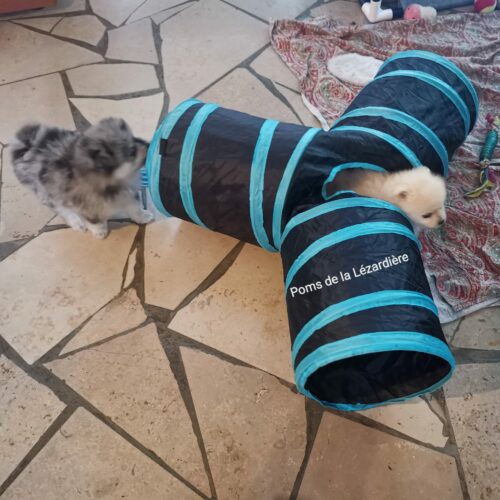
3 -The puppy should only obey his owner.
It is therefore important to reduce the number of hugs from strangerson your walks to avoid your puppy getting into the habit of going too far towards others, even following them without your permission.
Learning from others is much more difficult. You are not always in control of your dog because of “others”. Unfortunately, some people come and pet a puppy on their own without asking permission.
In this way, they encourage him to jump on them and get excited. You will then find it more difficult to calm them down.
You must remain vigilant, anticipating the puppy’s reactions.
If he stares at something or someone, say “leave”and fertilise him (add a reward, such as a kibble, at the beginning of the training).
(See the chapter Learning the “leave” ![]() )
)
In the past, not only was coercive training in the majority (the dog had to obey and there was no room for its feelings and individuality), but it was also recognised that a dog had its own way of saying “stop” (the bite).
Most dogs could evolve without being considered as living stuffed animals. Now, the slightest sign of rejection, the smallest grunt is considered a flaw.
Today, the dog is not really allowed to say “no” and it is up to us to do it for him. It is up to us to block the way when children throw themselves at him to touch him, it is up to us to explain, to educate and even more so when adults are involved.
What other learning methods are there? Who created them? What do they teach?
4 – Use what motivates him to educate him: kibble, toys, cuddles, etc.
Teaching your dog to give up something is clearly asking him to stop doing what he is doing, even if it gives him great pleasure, but to offer him something else instead.
So you can ask a dog to stop digging a hole in the garden, to stop chasing a cat, to stop jumping on guests… while offering him something much nicer in return.
“Giving up is winning”.
The indication of “leave” is just as important as a basic indication such as “sit“, “stay“… It allows a return to calm to your puppy who is in a too strong emotional state (be it excitement, fear, aggressiveness…).

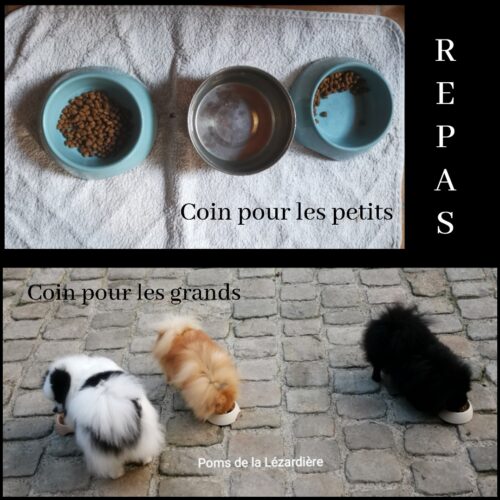
5 – Use mealtimes to teach him some exercises (maximum 2 minutes).
Take some kibble and with your puppy start:
Put the bowl down, the puppy stays calm.
Show him his bowl by saying “bon appétit” or “table”. To free him from the exercise.
You use the same word as for the other orders.
An order = a word = an action (an accomplished act)
6 – At each outing, teach him obedience
Repeat the exercises learned at home.
Walk him without a leash (or with a lanyard if you cannot leave him off the leash) in protected areas (park, etc.).
At the age of 2 – 3 months, the puppy follows you everywhere.
The puppy needs to exercise (he will be calmer when he gets home).
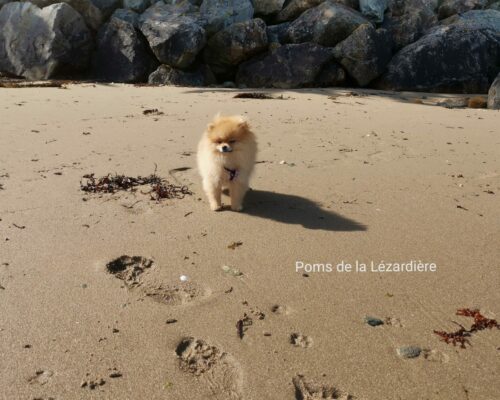
Direct-Vet.fr
Puppy socialisation
Video explanation by Dr Charlotte RENARD
Consulting veterinarian for Direct-Vet.fr
More information
Potty training is an essential step in the well-being of the dog and the family.
